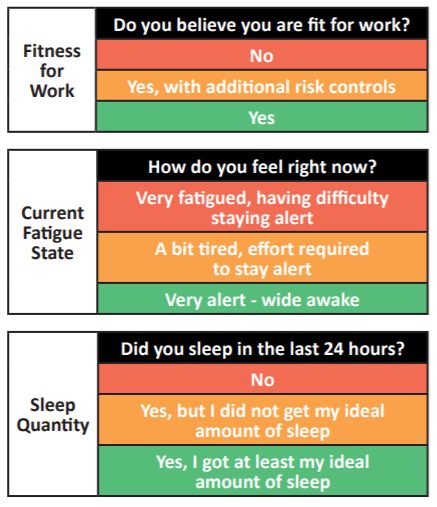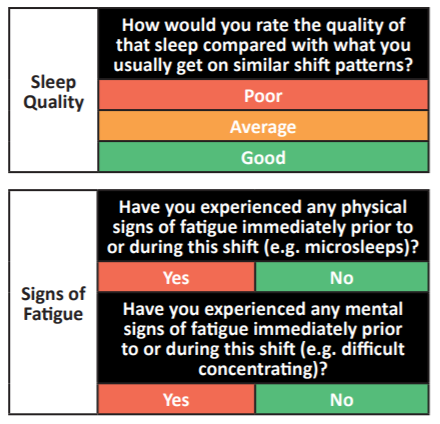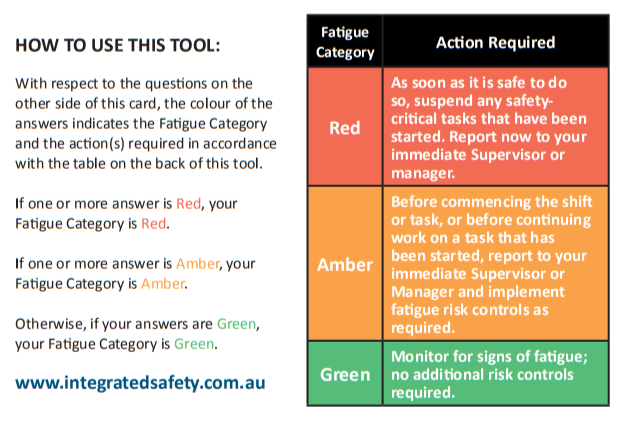Coming into the busiest time of year for most clients, it’s timely to look at fatigue as a risk to your workers. Fatigue management must be a shared responsibility between workers and management. Using a risk management approach (identify hazards, assess the risk, implement controls, monitor) and consulting with workers is the best way to control the risks associated with fatigue. There are tools such as the one below to guide you through questions to ask workers.
What is fatigue?:
Fatigue is a state of mental and/or physical exhaustion which reduces a person’s ability to perform work safely and effectively. It can occur because of prolonged mental or physical activity, sleep loss and/or disruption of the internal body clock.
Fatigue can be caused by factors which may be work related, non-work related or a
combination of both and can accumulate over time.
How can fatigue be managed at work?
Rostering is a key factor in managing fatigue. Check in with workers to see how they are. Examine sign in and out times to ensure excessive overtime is not being worked – and if it is, how can the overtime be managed? Look at incident records to see if fatigue could have contributed. Ensure rosters allow for the required breaks between shifts. Develop a Plan B for unplanned absences.
Fatigue Management Strategies
If you know that a worker is fatigued to the point of being unsafe, there are strategies that can be used to ensure they get home safely:
- Provide transport home
- Arrange for the worker to be picked up
- Provide a quiet area for them to have a nap
More information
While there are plenty of tools on the internet to use, if you wish to undertake an in-depth fatigue risk assessment, contact me to assist with the process.



CLICK HERE TO DOWNLOAD THE FACT SHEET
For any clarification or questions, please contact Michelle Pitman, DWS Work Health Safety & Compliance Advisor, on 0401 014 619 or michelle@dws.net.au


